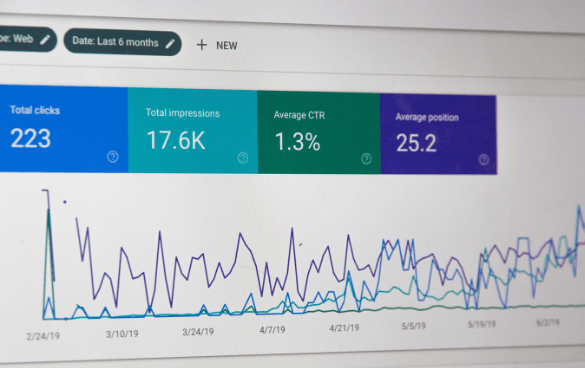Maximizing Your ROI with Remarketing In Google Analytics
Maximizing Your ROI with Remarketing In Google Analytics
Blog Article
Maximize Your ROI With Remarketing in Google Analytics
In the realm of digital advertising, the utilization of remarketing strategies within Google Analytics has actually shown to be a powerful device for enhancing return on financial investment. By harnessing the power of user data and tailoring ads to particular target market sections, organizations can substantially enhance their conversion prices. However, the actual vital hinge on the art of accuracy - recognizing customer habits, crafting compelling ads, and continually refining methods to drive ideal results. The journey to making best use of ROI with remarketing is a nuanced path led with insights and opportunities that can improve the trajectory of your advertising and marketing ventures.
Understanding Remarketing in Google Analytics
Comprehending remarketing in Google Analytics is important for maximizing your digital advertising and marketing strategy. Remarketing permits you to target users that have actually previously seen your website or engaged with your application, providing them with customized ads as they search various other sites or utilize various other apps within the Google Show Network. This technique helps keep your brand top of mind and urges customers to go back to your site, ultimately raising the chance of conversion.
By making use of Google Analytics, you can track the performance of your remarketing campaigns, obtaining valuable insights right into customer actions, engagement, and conversions. This data enables you to refine your targeting, messaging, and bidding strategies to enhance the general performance of your campaigns.
In addition, recognizing the different kinds of remarketing checklists offered in Google Analytics, such as common, vibrant, and similar target markets, enables you to develop tailored and extremely segmented projects customized to particular user sections. This level of granularity can considerably enhance the relevance and impact of your remarketing efforts, ultimately maximizing your return on investment.
Establishing Up Remarketing Listings
To properly carry out remarketing campaigns in Google Analytics, the initial step entails producing and setting up remarketing listings targeting particular user segments based upon their interactions with your website or application. By establishing up remarketing checklists, you can tailor your advertising and marketing efforts to get to users that have currently shown rate of interest in your product and services.
To start, navigate to the Admin section of your Google Analytics account and pick the Property where you wish to develop the remarketing listing. Then, under the Home column, click 'Target market Definitions' and pick 'Target markets.' Next off, click the red 'New Audience' switch and choose 'Develop New' to define the specifications for your remarketing list.

Crafting Efficient Remarketing Ads

When crafting your ads, concentrate on producing eye-catching headings and compelling visuals that stick out to prospective clients. Incorporate solid calls-to-action that motivate individuals to review your website and finish a preferred activity. Utilize vibrant remarketing to show personalized advertisements including services or products that users have previously viewed on your site.
In addition, make certain that your advertisements are mobile-friendly considering that a substantial section of web web traffic originates from mobile phones. Examination various ad variations to identify which messages and designs drive the ideal outcomes. By constantly refining and enhancing your remarketing ads based upon efficiency data, you can maximize their performance and enhance your roi.
Analyzing Remarketing Performance

With Google Analytics, marketers can track the efficiency of their remarketing projects in real-time, enabling them to recognize fads, patterns, and areas for renovation immediately. By analyzing the information, online marketers can determine which ads are executing well, which audience sectors are responding favorably, and which networks are driving one of the most conversions. This level of granularity makes it possible for marketers to make data-driven choices to maximize their remarketing projects for better results.
Enhancing ROI With Remarketing
Analyzing remarketing information in Google Analytics makes it possible for online marketers to determine possibilities for maximizing roi (ROI) via calculated adjustments - What Is “Remarketing” In Google Analytics?. To maximize ROI with remarketing, it is important to comprehend the actions of your target market. By analyzing user interactions, such as the web pages they saw, the products they checked out, or the activities they tackled your site, you can tailor your remarketing campaigns a lot more efficiently
Segmenting your audience based upon their actions permits you to create customized and targeted advertisements that are more probable to reverberate with them. By revealing relevant ads to certain sections of your target market, you can enhance the possibilities of conversion and ultimately enhance your ROI.
Moreover, testing various ad creatives, messaging, and deals can assist identify what resonates ideal with your audience. A/B testing enables you to try out different aspects of your ads to identify what drives the greatest engagement and conversion rates.
Conclusion
To conclude, making best use of ROI with remarketing in Google Analytics calls for a critical strategy to assessing customer habits, segmenting audiences, creating customized advertisements, and enhancing campaign performance. By leveraging data-driven understandings and checking different strategies, services can improve their remarketing efforts to drive greater interaction and conversion rates. This systematic strategy makes sure that resources are successfully designated towards making the most of this website returns on investment in remarketing projects.
Next, click on the red 'New Target market' button and select 'Produce New' to define the criteria for your remarketing listing.
By continuously refining and maximizing your remarketing ads based on efficiency data, you can maximize their efficiency and improve your return on financial investment.
By delving right into these insights, marketing experts can get an extensive understanding of just how their remarketing efforts are reverberating with their target audience and driving conversions. To take full advantage of ROI with remarketing, it is essential to recognize the behavior of your target market.In conclusion, making best use of ROI with remarketing in Google Analytics needs a critical method to assessing individual actions, segmenting audiences, producing customized ads, and enhancing project efficiency.
Report this page